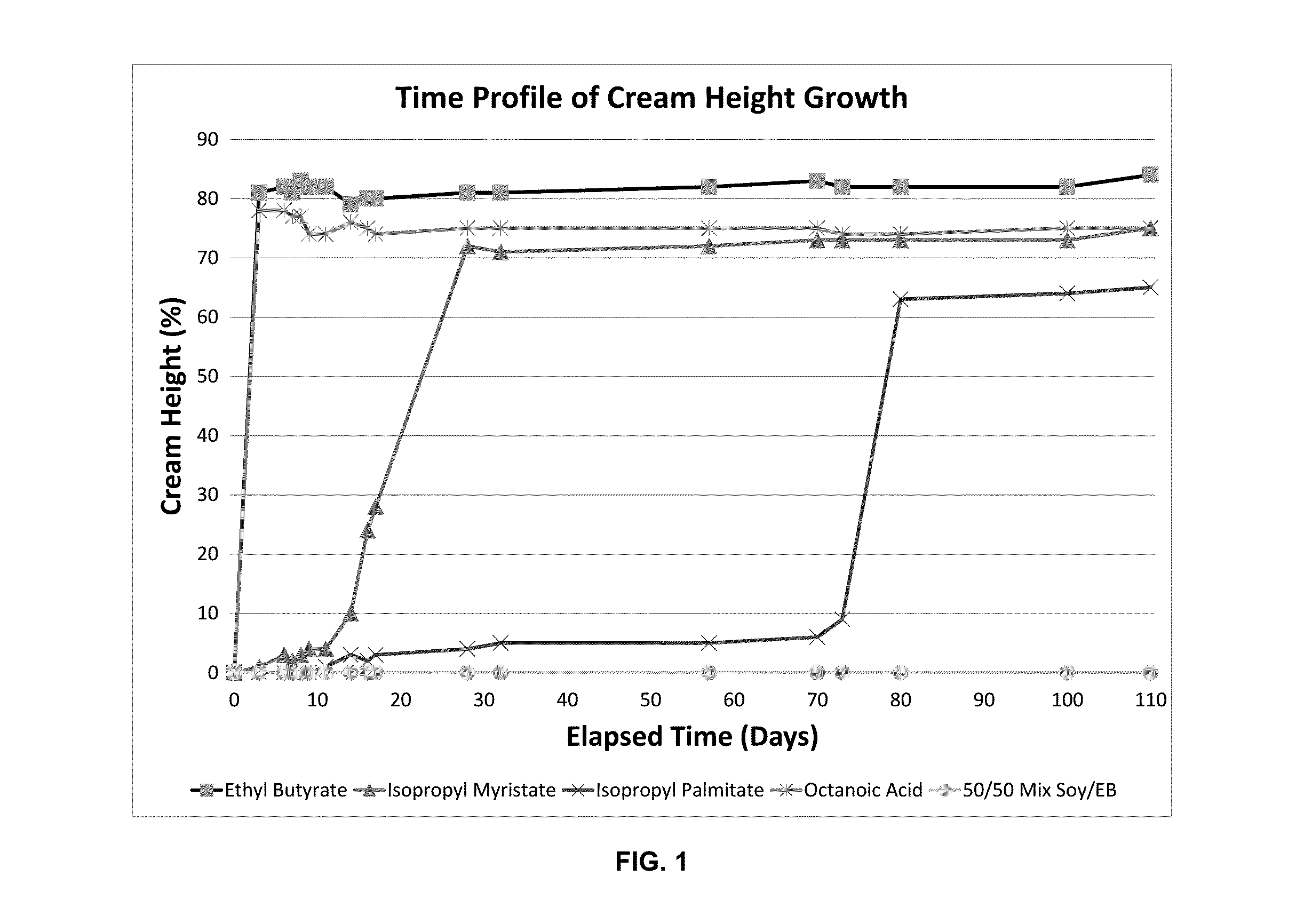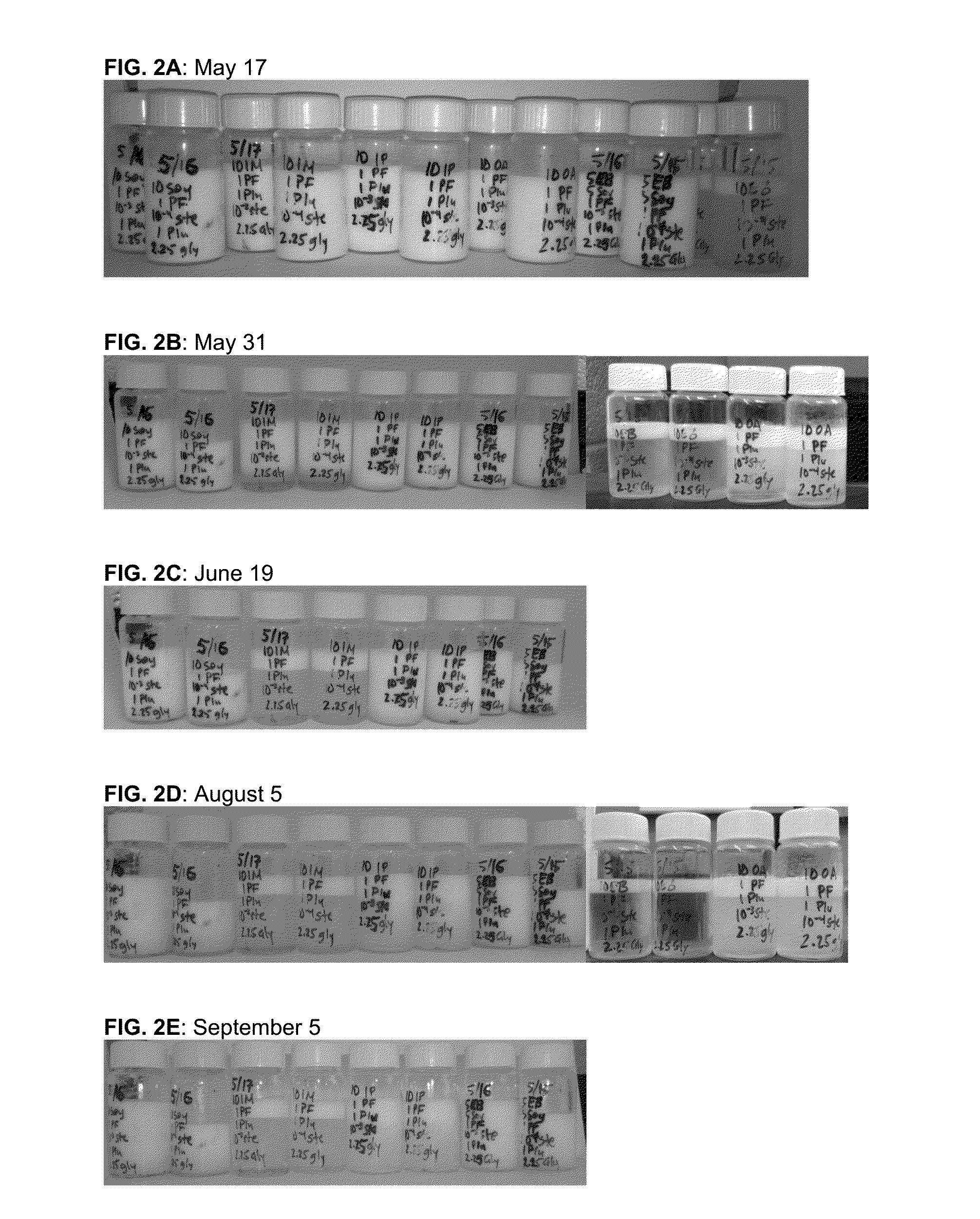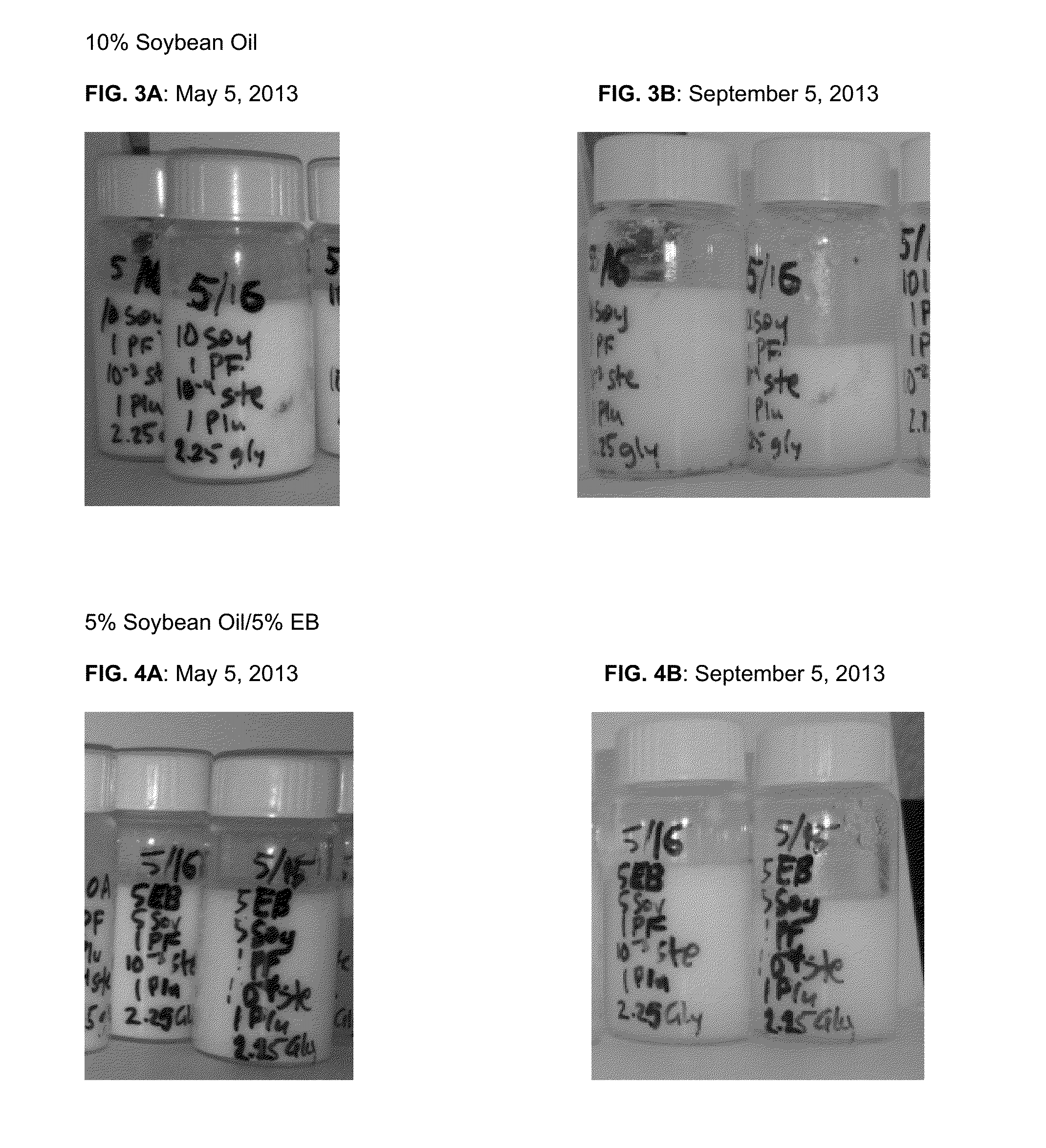Emulsion containing two oils and stabilizers
a technology of stabilizer and emulsion, which is applied in the direction of emulsion delivery, oil/fat/waxes non-active ingredients, pharmaceutical delivery mechanism, etc., can solve the problems of frequent side effects, and achieve the effects of less inflammation, less pain at injection site, and greater stability during storag
- Summary
- Abstract
- Description
- Claims
- Application Information
AI Technical Summary
Benefits of technology
Problems solved by technology
Method used
Image
Examples
example 1
Evaluation of the Stability of Oil-in-Water Macroemulsions During Storage at Ambient Temperatures
Background:
[0079]When first prepared, oil-in-water macroemulsions are opaque, white to off-white liquids. A stable macroemulsion maintains this appearance over time. An unstable macroemulsion gradually undergoes phase separation, a dynamic process resulting in the formation of an upper layer that is opaque and white to off-white (i.e., an oil layer that has “creamed”) and a lower layer that changes from its original opaque appearance to clear and nearly colorless. Phase separation processes are often described as “Ostwald ripening.”
Purpose:
[0080]Visual evaluation of the stability of oil-in-water macroemulsions during storage at ambient temperatures.
Emulsion Formulation:
[0081]The requisite quantity of propofol was combined with specified quantities of oils to be studied (Table 8). The resulting fluid was agitated until homogeneous. Separately, stock solutions of 0.1% ionic surfactant in w...
example 2
Evaluation of the Stability of Oil-in-Water Macroemulsions after Repeated Freeze-Thaw Cycles
Background:
[0083]When first prepared, oil-in-water macroemulsions are opaque, nearly colorless liquids having a uniform average particle size. A stable macroemulsion maintains this average particle size after undergoing repetitive freezing and thawing (i.e., freeze-thaw cycles). An unstable macroemulsion exhibits changes in its average particle size as a result of this treatment.
Purpose:
[0084]Changes in the average particle size of oil-in-water macroemulsions that had been subjected to freeze-thaw cycles were monitored in three successive experiments in which (a) the composition of the oil phase was changed (Experiment A); (b) the non-ionic surfactant was changed (Experiment B); and (c) the concentration of a preferred non-ionic surfactant (Pluronic F68) was changed (Experiment C).
Experiment A: Effects of Changes in Composition of the Oil Phase Emulsion Formulation:
[0085]The requisite quantit...
experiment b
hanges in the Non-Ionic Surfactant
Emulsion Formulation:
[0088]The requisite quantity of propofol was combined with specified quantities of oils to be studied (Table 11). The resulting fluid was agitated until homogeneous. Separately, stock solutions of 0.1% ionic surfactant in water and 20% solutions in water of each of three nonionic surfactants were prepared. Aliquots of the stock ionic surfactant solution and one of the nonionic surfactant solutions were added to deionized water, and the resulting solution was added to the oil mixture at the desired concentration. The resulting mixture of oil and aqueous phases was shaken. Finally, the mixture was cooled in a water bath and emulsified with a probe sonicator. Aliquots of each emulsion were transferred to labeled, clean, dry glass bottles and closed and sealed with a screw cap.
TABLE 11Composition of Experimental Emulsions of the InventionOil Componentof EmulsionNonionic Surfactant50:50 Mixture SoybeanPluronic F68oil / Ethyl butyrate (...
PUM
| Property | Measurement | Unit |
|---|---|---|
| Fraction | aaaaa | aaaaa |
| Fraction | aaaaa | aaaaa |
| Time | aaaaa | aaaaa |
Abstract
Description
Claims
Application Information
 Login to View More
Login to View More - R&D
- Intellectual Property
- Life Sciences
- Materials
- Tech Scout
- Unparalleled Data Quality
- Higher Quality Content
- 60% Fewer Hallucinations
Browse by: Latest US Patents, China's latest patents, Technical Efficacy Thesaurus, Application Domain, Technology Topic, Popular Technical Reports.
© 2025 PatSnap. All rights reserved.Legal|Privacy policy|Modern Slavery Act Transparency Statement|Sitemap|About US| Contact US: help@patsnap.com



